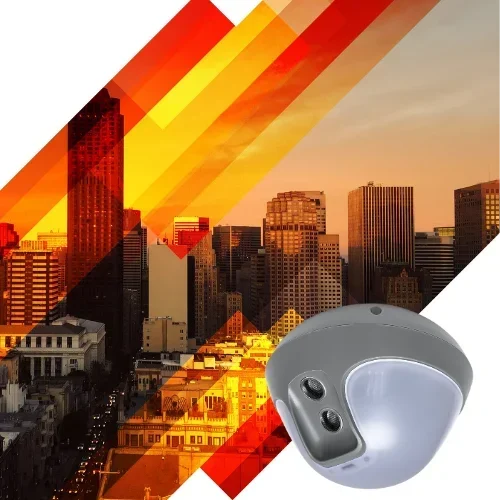Author: Rafał Gwoździowski
Access control upgrade without replacing controllers or just the readers themselves? Is it possible? Of course it is! Below I will outline some ways of doing this for specific and actual cases. Each case is different, and not for every case is it possible to completely modernise the access control, the controllers alone or just the readers and cards. It all depends on what the customer wants, what problems he is currently facing and in which direction he would like to expand his access control in future. The needs and current problems are different in each case. What is not disputable, however, is the fact that it is worthwhile and even necessary to modernise access control, especially in times of the NIS2 directive and other existing threats.
Case 1.
MIFARE Classic | Wiegand card readers | encrypted card sector reading
Imagine an access control system with Wiegand readers and the Mifare Classic card standard, and with reading of the card number stored in the encrypted sector of the card. There are 300 cards issued in the system, however, the cards have been unauthorisedly duplicated by some employees. Although at the time the system was selected and installed it was the most secure access control system possible, it is currently no longer. As a result, the company’s owner does not have up-to-date and reliable knowledge of the actual entries and entrances of employees, nor does he know whether people who should not be there, such as former employees or contractors, are entering the company’s premises. The system no longer fulfils its purpose of controlling access to the company’s premises.
Case 2.
MIFARE Classic | Wiegand card readers | serial number reading
Access control system with Mifare Classic readers and card serial number reading. One of the most popular at the moment. The system issues 100 cards, the company has several branches across the country and is currently building a new headquarters with a central warehouse. It is happy with the system, but when building the new premises, the company owner would like to install a more secure solution, but one that is also compatible with the old access control system, so that a single card can be used on both systems. In the new premises, doors are also to be opened via smartphones thanks to mobile credentials / virtual access cards.
Case 2.
MIFARE Classic | Wiegand card readers | serial card reading
Access control system with Wiegand readers and Mifare Classic cards and card serial number reading. One of the most popular at the moment. At the time of installation, a more secure solution was already available. There are 100 cards issued on the system, the company has several branches across the country and is currently building a new headquarters with a central warehouse. The system is technically robust for owner, however, with the construction of the new headquarters, the company’s owner would like to upgrade the company’s access control system and install a more secure solution, but one that is also compatible with the old access control system so that a single card can be used on both systems. He has also analysed the market and wants to be able to open doors in the new premises using smartphones as well.
Case 3.
Unique 125kHz card readers | Wiegand | serial number reading
Imagine the case of an access control system with Wiegand readers and Unique 125kHz cards. There are 5000 cards issued in the system. The system was installed in the early 2000s and the manufacturer no longer supports it for several years. The cards are now basically only used to record employee working hours (time and attandance), as the access control system no longer fulfils its purpose. Many doors are pertinently open, devices are not working and everyone has access to the premises. Equipment thefts are occurring and employees are handing over their cards to others to count overtime. The company manager has recognised the problem, but funds are limited.
Case 4.
OSDPv2 readers | iClass / DESFire cards | encrypted number reading
Imagine also a company that installed a new access control system a few years ago, based on software and controllers from company A and readers from company B communicating with the controllers via OSDP V2 protocol and using a secure card standard that company A did not offer at the time. Unfortunately, despite assurances, the system works slowly, with changes to user rights or remote door opening executing with a long delay or not at all. The company has several branches, independent of each other. Each of them has a separate access control system, however, with such a rate of growth, unification of the AC system and central management of users and their rights is already necessary. The owner wants an efficient AC system and a secure card standard because his customers demand it. He would like to upgrade to a centrally managed solution in the future.

Access control upgrade - Case studies
Each of the above-mentioned cases is different and requires a different approach.
1 In the first case, a comprehensive replacement of the access control system can be proposed, but also, which will be more cost-effective, the replacement of the readers themselves and, at the same time, the card system with a solution based on the MIFARE DESFire card standard and NODER readers supporting this standard, i.e. NODER MD-R, NODER MDK-R and the NODER RCP-1 time and attendance terminal as required. Such a system would have a high degree of security and the cards could no longer be duplicated. Management would gain knowledge of the movements of its employees on company premises.
2 In the second case, the newly built headquarters would have to be equipped with a complete NODER access control system with NODER EWE4, NODER EWE4-LCD or NODER EE12 controllers and NODER readers. With activated reading of the serial numbers of MIFARE Classic cards, so that employees from the branches would have access via their existing cards (if their entitlements allow them to do so) to the premises at the head office and the main warehouse. In addition, the system would issue virtual NODER cards and the NODER Mobile Access app for iOS and Android phones, which would be used by head office employees. The owner thus gains a modern and, last but not least, secure access control solution with the possibility of gradual and cost-effective expansion.
3 In the third case in question, upgrading the system would have to involve replacing the entire access control system. Replacing the controllers and readers in this company would not work, as the existing system is no longer supported by the manufacturer. In such cases, i.e. a very old and faulty system, it is always reasonable to also replace the cabling or at least have it reliably inspected and inventoried. The business owner will gain a modern and very secure solution for building an access control system as well as a time registration system.
4 In the last case, if the customer does not want to change the card system because he already has a solution that meets his security requirements. If, in addition, the readers are equipped with the universal and encrypted communication protocol OSDP v2, the solution is to replace only the controllers and the access control management software. The NODER EWE4, NODER EWE4-LCD and NODER EE12 controllers have the option of connecting third-party readers via the encrypted OSDP v2 protocol and their operating structure excludes the possibility of the problems currently experienced by the company.
SUMMARY
The types of systems, types of connections, types of readers and cards are numerous. Depending on what your current system is, how it has been designed and implemented, what your current requirements and expectations are, an access control upgrade can look like accordingly. If you are interested in what solution we have for your case, please contact us.



